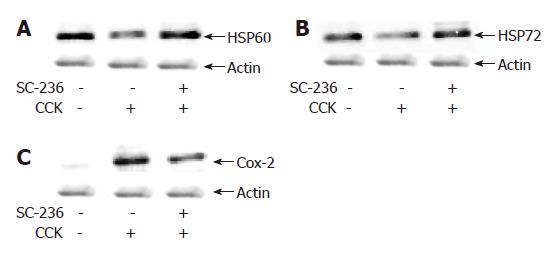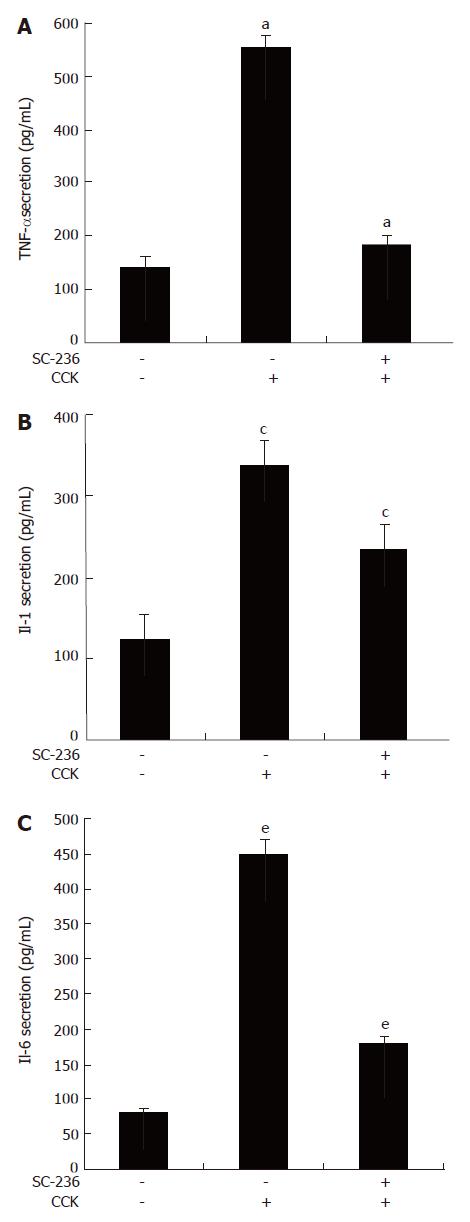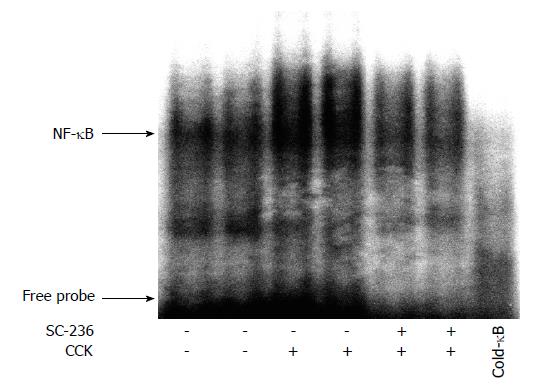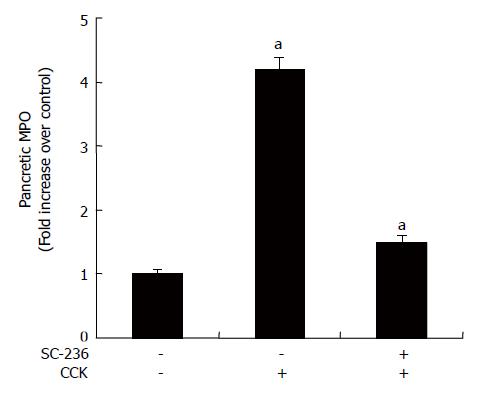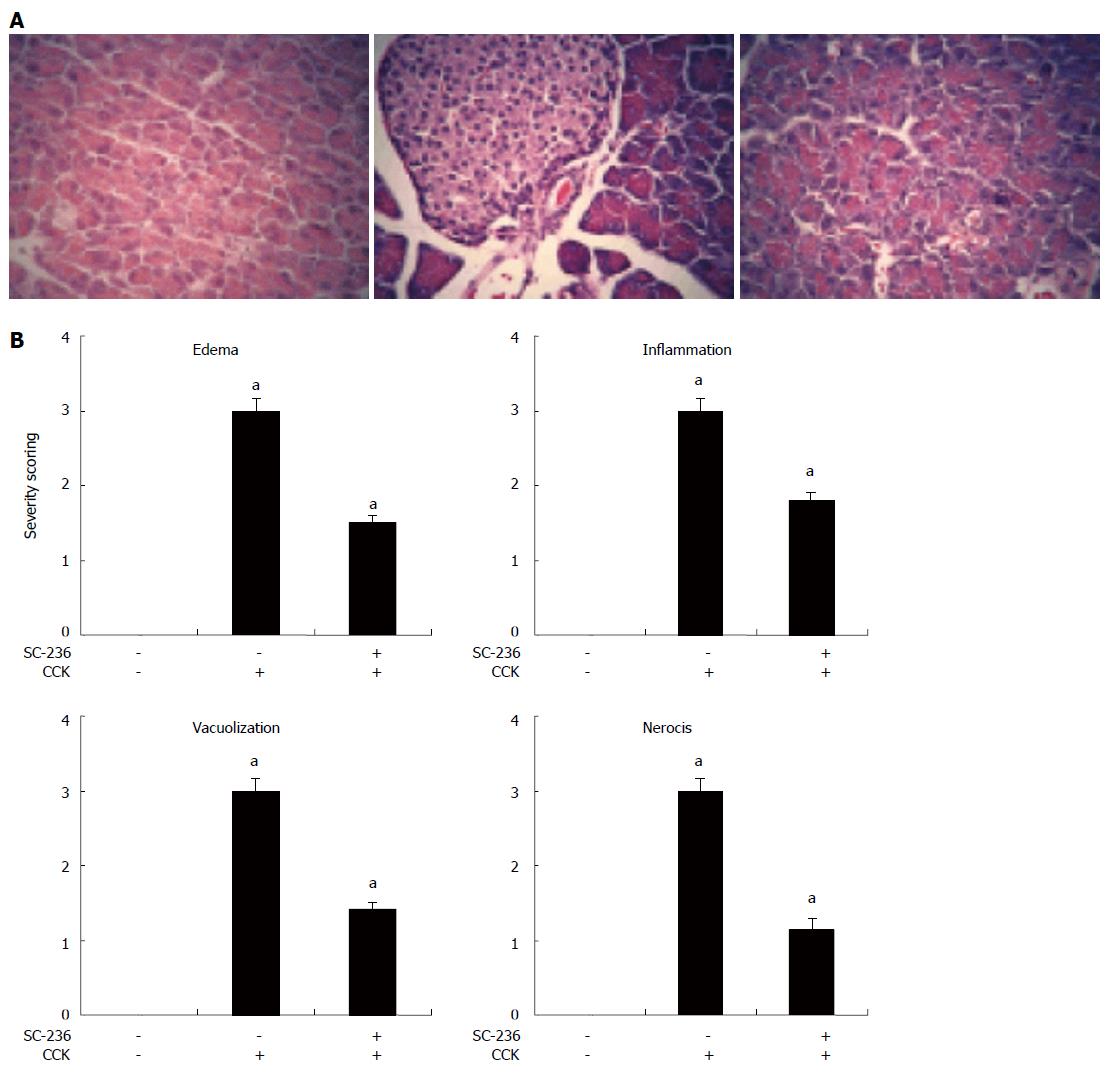Copyright
©2007 Baishideng Publishing Group Co.
World J Gastroenterol. Apr 28, 2007; 13(16): 2298-2304
Published online Apr 28, 2007. doi: 10.3748/wjg.v13.i16.2298
Published online Apr 28, 2007. doi: 10.3748/wjg.v13.i16.2298
Figure 1 Effects of SC-236 pretreatment on the (A) pancreatic weight/body weight ratio (p.
w./b.w.), (B) serum amylase activity and (C) serum lipase activity during CCK-octapeptide-induced AP. Groups were treated as indicated in the study protocol. Mean ± SE for 6 animals are shown. a,c,eP < 0.05 vs saline-treated group.
Figure 2 Effect of SC-236 on HSP60, HSP72 and COX-2 expression in CCK-octapeptide-induced AP.
The figure depicts representative Western blots of protein lysates (30 mg/lane) from the pancreas of rats, showing the expression of HSP60 (A), HSP72 (B) and COX-2 (C).
Figure 3 Effect of SC-236 on TNF-α (A), IL-1β (B) and IL-6 (C) secretion in CCK-octapeptide-induced AP.
Rats were treated as indicated in the study protocol. Mean ± SE for 5 animals are shown. a,c,eP < 0.05 vs the saline-treated group.
Figure 4 SC-236 inhibits NF-κB activation in CCK-octapeptide-induced AP.
Protein extracts were prepared from pancreas harvested at 3 h after last injection into animals with DMSO, CCK-octapeptide, or SC-236 with CCK-octapeptide. Extracts were assayed for NF-κB binding activity by EMSA as described in the Materials and Methods.
Figure 5 MPO activity was measured in the pancreas 12 h after completion of the CCK-octapeptide injections and in saline-injected control (CON) mice.
Data are expressed as MPO activity. aP < 0.05 vs the saline-treated group.
Figure 6 Effects of the SC-236 on pancreatic inflammatory changes following AP.
A: Representative HE-stained sections of pancreas in control rats not given CCK-octapeptide (left panel), in rats given CCK-octapeptide (middle panel), and in rats given SC-236 (right panel). Original magnification × 200; B: Histologic sections of pancreata harvested 12 h after injections of saline (CON), CCK-octapeptide alone, or SC-236-treated groups were scored from 0 (normal) to 3 (severe) for edema, inflammation, vacuolization, and necrosis as described in Materials and Methods. aP < 0.05 vs the saline-treated group.
- Citation: Seo SW, Jung WS, Piao TG, Hong SH, Yun KJ, Park RK, Shin MK, Song HJ, Park SJ. Selective cyclooxygenase-2 inhibitor ameliorates cholecystokinin-octapeptide-induced acute pancreatitis in rats. World J Gastroenterol 2007; 13(16): 2298-2304
- URL: https://www.wjgnet.com/1007-9327/full/v13/i16/2298.htm
- DOI: https://dx.doi.org/10.3748/wjg.v13.i16.2298










